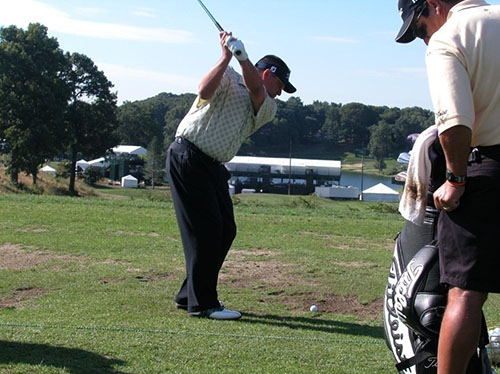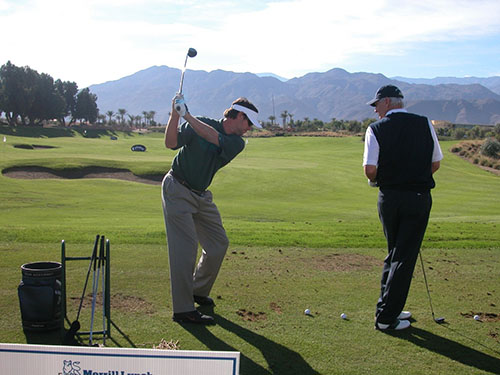Elbow Position in Golf Swing: Magic or Tragic?

A Legacy Post by Keiser University College of Golf Senior Faculty and Director of Research Dr. T. J. Tomasi (1940-2023)
Collect three teaching pros in a room and ask them the correct position of the trail elbow at the top of the swing, and you’ll probably get three different answers: 1. let the elbow fly away from your side; 2. keep it pinned to your side; 3. position it somewhere in between. Add me to the mix, and there will be a fourth answer: All three could be right, as long as the elbow position matches up with the rest of the swing.
Golf Elbow Position
Below are pictures of three tour players, all of whom handle the trail elbow quite differently at the top of the swing. Former Ryder Cup captain Paul Azinger has it pointing straight down, while Masters Tournament champ Fred Couples has it almost horizontal to the ground. Robert Gamez, a winner on the PGA Tour in his prime, is in the middle with the slant of his elbow equal to his spine angle — a position most often taught to beginners.
Which is correct? In an exact and measured world, one position would be correct, while the other two are wrong. But in golf, as every good teacher knows, a good swing is a perfectly matched ensemble of compensations where an error for one is the savior for another. Said another way: The same swing mechanics can be magic for one player, but tragic for another.
It all boils down to this: Be careful how you mix and match swing mechanics. Some mechanics fit together quite nicely to produce good golf shots, and some do not. The trick in building and keeping a good swing is understanding which combinations fit together for you.
Elbow Position in Golf Swing Tips
The importance of elbow position in the golf swing cannot be overstated, as it directly influences the efficiency and consistency of your shots. Proper elbow positioning helps maintain the structural integrity of your swing, facilitating a smooth and controlled motion from start to finish. A slight bend in both elbows promotes fluidity and power generation, enabling a natural transfer of energy from your body to the club. Moreover, maintaining the correct alignment of the lead elbow (left elbow for right-handed golfers) during the downswing is crucial for ensuring a square clubface at impact, reducing the likelihood of slices or hooks. Whether it’s keeping the elbows close together during the backswing or focusing on the lead elbow’s path during the downswing, mastering elbow position leads to improved accuracy, distance, and overall performance on the golf course.
If you’re a decent player already (~8 handicap or less) and your trail elbow is either flying or extremely tucked to your side, it may not be a problem that you should focus on – even though it looks unusual; it’s not always wrong.
If your handicap is higher than it should be based on considerations of age, fitness, frequency of play/practice, etc., then check out your elbow. It could be mismatched with the other key elements of your swing.
Diagnosing correctly which mechanics in your student’s swing are magic and which are tragic is why you get the ‘big bucks’.

Robert Gamez has the traditional trail elbow position at the top of his swing: his trail forearm is parallel with his spine angle.

Paul Azinger hugs his elbow to his side. There’s not a lot that can go wrong from this position, but you must have a very strong core to maintain distance.

As a teacher, would you have changed Fred Couples elbow position? He flies his elbow away from his side, forcing him to re-slot that elbow coming down, a compensation he performs quite nicely swing after swing.
Learn more!
Want more tips? If you want to take your game to the next level, contact our team at Keiser University’s College of Golf & Sport Management today. With our dedication and experience, we can elevate your game to new heights together. Give us a call today at 888-355-4465.














